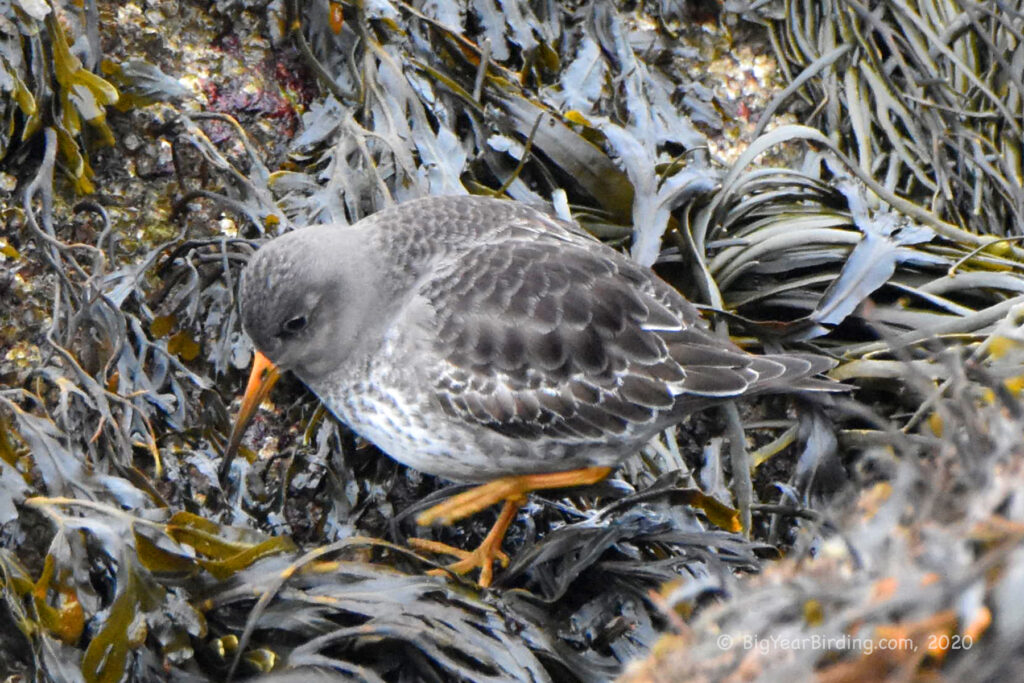
The Purple Sandpiper (Calidris maritima) is a medium-sized bird that belongs to the family Scolopacidae. It measures around 7-8 inches in length and has a wingspan of 15 inches. It weighs around 2.3-3.3 ounces. This bird is usually dark gray in color, and it has a short, straight, and thin bill.

One of the distinguishing field marks of the Purple Sandpiper is its small size and short bill. Its plumage is mostly gray with darker streaks on its back and wings. It also has a white belly and a slightly curved beak that is black in color. In the breeding season, the males have brighter plumage than females, and their bills are slightly longer.
The Purple Sandpiper breeds in the Arctic regions of Canada, Greenland, and Russia. During the winter, it migrates to the coasts of the United States, particularly along the Atlantic coast, as well as to Europe and Asia. It is a rare migrant to inland locations. These birds are known for their hardiness and can be found in the coldest and most inhospitable coastal environments.
These birds forage along rocky shorelines and intertidal areas for insects, crustaceans, and mollusks. They use their bills to probe the sand and rocks for prey. The Purple Sandpiper is a solitary bird, but during the winter, it can be seen in small flocks along the coast. It is also known for its distinctive call, which is a high-pitched whistle.

In conclusion, the Purple Sandpiper is a small, hardy bird that is well-adapted to living in harsh coastal environments. Its distinguishing field marks include its small size, short bill, and mostly gray plumage. These birds breed in the Arctic and migrate to the coasts of the United States, Europe, and Asia during the winter. They forage along rocky shorelines for food and are known for their distinctive call.

